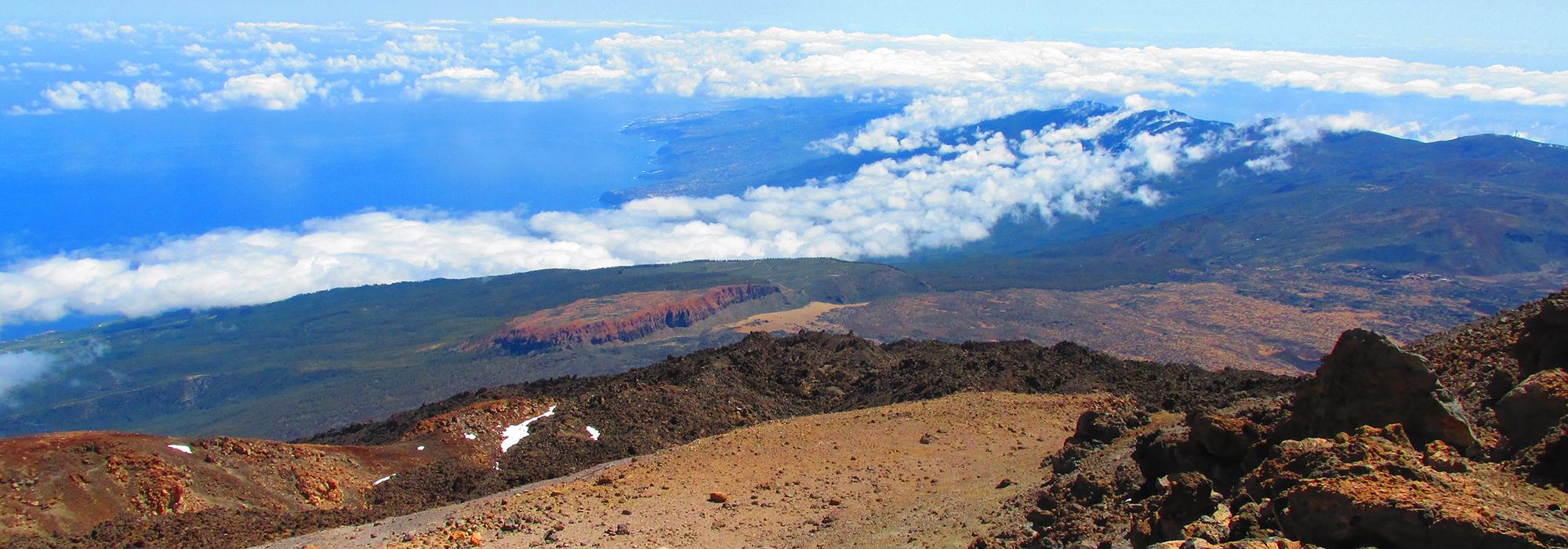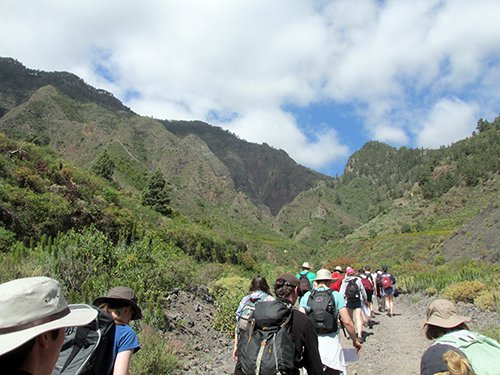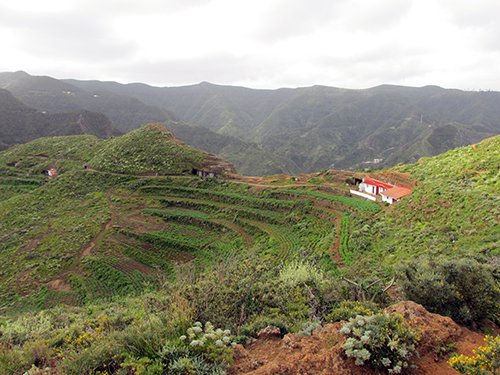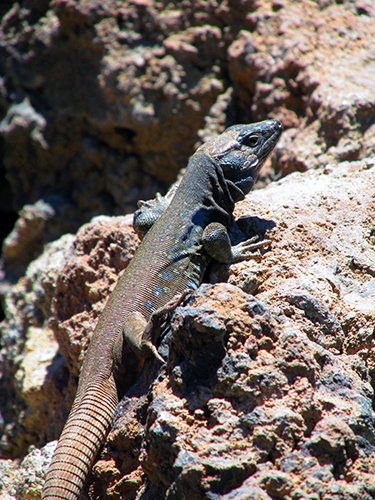
Report: A Tenerife field trip, May 2018
An Undergraduate Travel Grant represented a significant contribution towards the costs of Biological Sciences undergraduate Henry Grub's chosen third-year option, 'Plant Biodiversity on an Oceanic Island'. Instead of a lecture series in Oxford, this was a week-long field trip on the island of Tenerife, in the Spanish Canaries, off the western coast of Africa.
The field trip took place in second week of Trinity term 2018, the beginning of summer on Tenerife and traditionally a fantastic time to examine the island's plant life.
On the first day we were taken to an area of coastal scrubland, perched on the cliffs in a remote area on northern Tenerife, to get an introduction to the main plant families on the island. This required examining and noting the features of key plants that had been labelled by the field trip staff (tutors from the University’s Department of Plant Sciences). The weather on the island was perfect for this kind of fieldwork: as it was often sunny with only scattered cloud, but Tenerife benefits from an unusually mild climate as an oceanic island, rather than the nearby African mainland. This feature is also crucial to impacting on the types of plants that are found on the island.

On the second day we visited a gorge, again near the coast, to examine in particular the flowers of Tenerife. This day we had a refresher about the floral formula and the typical flower structure. We then trekked into the gorge, independently observing specific flowers that had been selected by the staff – many of which are endemic to either Tenerife or the Canaries, i.e. cannot be found anywhere else on Earth. We tried our hands at writing our own floral formulae for these plants, and noted the various plants that break, or bend, the rules! When we returned to Puerto de la Cruz, the town in which we were staying, we had two lectures – overall we were given six lectures out in Tenerife that also form part of the option.
The third day was our tour day of the island. In the morning we were driven to the Teide National Park – the location of the highest point on Tenerife, the dormant volcano Mt Teide. We got to observe the change in habitats and vegetation as we ascended up the mountain. By the time we were at 2000m altitude the park began to look like Mars with its red rocks! We then ascended via cable car to the summit of the mountain – around 3500m – the highest altitude I personally had ever been! The thin air, strong sun and freezing temperatures made it a bizarre, but incredible place to visit! We then descended, and visited the Tenerife pine forests, made up of the endemic tree Pinus canariensis, and then the wildflower meadows populated by the invasive Californian poppy. Finally, we visited the coastal badlands, which are very sparsely populated on account of the rocky and salty soil. Here we observed another endemic, Euphorbia canariensis, which is a bizarre Euphorbia which has taken the form of a giant succulent with spines – convergent with a cactus.

On the fourth and fifth days we visited the woodlands – first the deciduous woodland that resembled one from the UK! Here we tested the draft identification key that had been written by one of the tutors. We also got to see unique plants such as Isoplexis – a woody foxglove, and giant buttercups (Ranunculus). Then we visited the university at La Laguna, where we had a lecture, before the laurel cloud forest, at around 1000m altitude. Here we examined foliage, and created our own identification keys based on distinctive leaf characteristics! The laurel forests are threatened and unique habitat on Tenerife.
On the final day, we went just up the road from where we were staying to the Botanical Gardens, where our tutors gave us a tour, for us to examine the plants that had been brought to Tenerife, originally as an experiment to see what would grow in the unusual climate. This was a great opportunity to speak directly with the tutors about the variety of plants we could see in the gardens, and link that with similar examples we had seen in the field. It was particularly beneficial to draw comparisons from an evolutionary and phylogenetic point of view.

Overall, this field trip was a valuable opportunity to see, first-hand and in the field, the variety of plant life that could be found on just one, small island. I was amazed at the diversity in habitats that we visited – from cloud forest to desert badlands, pine forest to wildflower meadow – all within just miles of each other. It was also a fantastic, and valuable, opportunity to practice field identification skills, field dissection skills (of flowers!) and as a refresher of classical field botany and taxonomy. Additionally, with the staff and students that attended (around 20 in total), there was a great atmosphere in general and the trip was immensely enjoyable! I will be examined on the content from this option in my FHS exams during Trinity Term 2019. The Undergraduate Travel Grant made a valuable contribution to the total costs, and as such allowed me to attend.